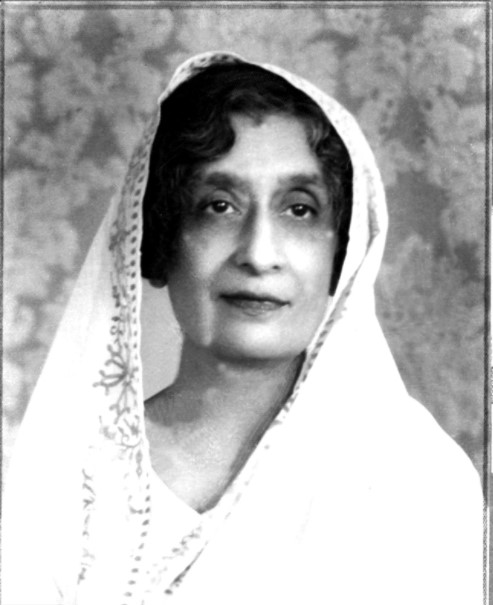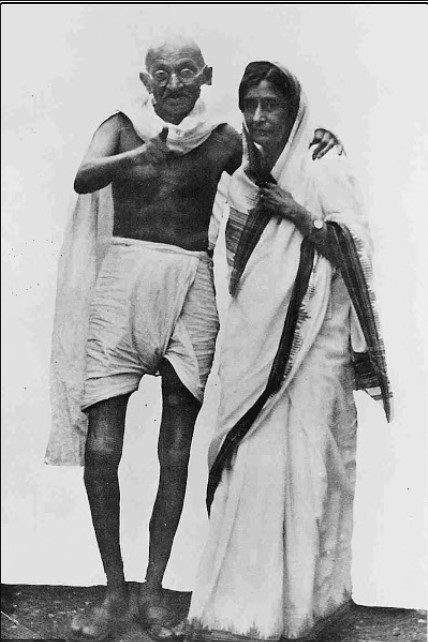
To be a part of Mahatma Gandhi’s Sabarmati Ashram, one needed to lead – most importantly, – a frugal life that involved wearing khadi, eating simple, maintaining cleanliness, and being self-reliant in general. Untouchability was strictly prohibited – menial tasks like scavenging of waste was to be done by the inmates themselves. Such a life of great austerity and self-discipline could not have been very appealing to the royals of the princely states who were used to leading lavish lives under the British suzerainty in the 20th century – almost emulating the Englishmen in their manners and upkeep.
Amrit Kaur, the Rajkumari of Kapurthala in Punjab, was no exception in this regard. Born and brought up in a Protestant household in Lucknow where her father was the manager of the estates of the erstwhile state of Awadh, Kaur was schooled in England before attending the University of Oxford. She was certainly not used to live like a commoner and yet, she went on to become one of the closest confidantes of Gandhi taking over as his secretary in the early 1930s and retaining the position till his assassination in 1948.
Changing to the Gandhian way of life was an arduous task for the princess. After returning from England in 1918, Kaur felt drawn towards the nationalist struggle. She was deeply motivated by Gopal Krishna Gokhale and Gandhi. Regarding Gokhale, she said, “The flames of my passionate desire to see India free from foreign domination were fanned by him.” She wanted to join Gandhi’s ashram immediately during the time but seemed reluctant to give up her luxuries. According to Gandhi, some of the things she was used to as an aristocrat were her fineries and crepes. Also, her family, though close to the Congress, did not want her to jump headlong into the freedom struggle or join the ashram. Only after her father’s death did she join the ashram and became Gandhi’s secretary for sixteen years. Aruna Asaf Ali and Sushila Nayyar in their obituary to Amrit Kaur point out how she was able to adapt to the strict rules of the ashram – donning khadi clothes, spinning the charkha, and eating simple food with the other inmates of the ashram.
Before joining the ashram, she was in constant touch with Gandhi as she went on to establish herself as a crusader for women’s rights over the years. She co-founded the Delhi Women’s League with Rameshwari Nehru which was the Delhi chapter of the All India Women’s Conference. This association was instrumental in getting the British to pass the Child Marriage Restraint Act in 1929. Popularly known as the Sharda Act, it increased the legal age for marriage to 14 for girls and 18 for boys. Kaur also played a pivotal role in the setting up of the all-women Lady Irwin College in Delhi. She led relentless efforts, sometimes clashing with leaders within the Congress itself to bring more and more women into the public/political sphere.

Kaur was fascinated by Gandhi’s willingness to recruit women into his struggle for Satyagraha. Though Gandhi advocated for the equality of men and women in the household, he insisted that domesticity and motherhood be looked after by women. When it came to taking part in political activities, Gandhi wanted women to be at the forefront of Satyagraha and questioned the vigorous nationalist attempts to make the struggle for the freedom movement more masculine and by extension, more violent. Kaur points out to Richard Gregg in the introduction to a collection of letters (“love letters”-as Gandhi jokingly pointed out, according to Kaur) that Gandhi wrote to her, as to what drew her to Gandhi – “…desire to have women in his non-violent army and faith in womankind. This is an irresistible appeal to a woman in a land where women were looked upon as fit for producing children and serving their lords and masters!…”
However, Kaur was never a submissive follower of Gandhi. The same is best evident from how Gandhi used to jokingly address her as ‘rebel’ and ‘idiot’ in his letters to her. He would sign off as ‘tyrant’ and ‘robber’. Even in one of their early interactions, Kaur had questioned the necessity of the boycott movement since burning foreign goods was wasteful. Not one to mince words, Kaur even clashed with Jawaharlal Nehru when he did not include a single woman as President in the Congress Working Committee in 1936. She wrote a scathing letter to him mentioning the necessity of representation of women in politics. Even Gandhi pointed out that he would not have dared to ‘break the convention of having woman members.’ Nehru was forced to redraw the composition of the subcommittees under CWC and formed an all-women committee to look into the role of women in a planned economy. Kaur’s views on complete freedom of women were also not consonant with Gandhi’s view on the same matter. Yet, Kaur and Gandhi had developed a deep bond of friendship which was to continue till Gandhi’s death. Kaur echoed Gandhi’s views on the ‘Harijans’, the abolition of child marriage, widow remarriage, the abolition of regressive norms like sati, maintaining cleanliness and hygiene, etc.
As the Union Minister for Health in the first Cabinet of independent India, Kaur painstakingly laid out the base of the health infrastructure amidst opposition from several quarters. Her efforts led to the establishment of the All India Institute of Medical Sciences, which continues to remain one of the most premier institutes for healthcare and medical education in this country. She also founded the Indian Council of Child Welfare and became its first president. Further, she served as the president of the Indian Leprosy Association and the Tuberculosis Association. Throughout her journey as a champion of women’s rights, she had advocated for healthcare by providing basic medical education, and giving milk and protein-rich food to children and pregnant women. Like Gandhi, she also emphasised on the necessity of sanitation and cleanliness in maintaining health but was aware of the practical problems the poorer people faced in this regard.
She continued to live a frugal life and did not let power get to her head. All of this with her no-nonsense persona, her charisma, and her oratory skills made her the legend that she is today – someone who gave away everything for the sake of the downtrodden despite hailing from a position of great privilege.
Debanjan is a second year student of History at St.Stephen's College, Delhi


